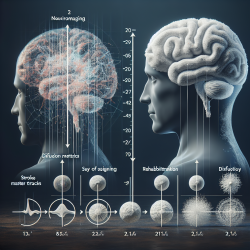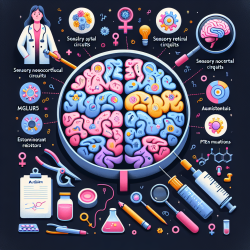Introduction
Artificial Intelligence (AI) is transforming the landscape of healthcare, offering unprecedented opportunities for enhancing patient care and outcomes. As practitioners in the field of speech-language pathology, understanding and leveraging AI can significantly impact our work with children, providing more personalized and effective therapy. This blog explores insights from the research article "Artificial Intelligence Powers Digital Medicine" and discusses how practitioners can integrate AI into their practice to improve child outcomes.
The Promise of AI in Healthcare
The research by Fogel and Kvedar (2018) highlights the transformative potential of AI in healthcare. AI's ability to process vast amounts of data quickly and accurately can lead to better disease prevention, early detection, improved diagnosis, and personalized treatment plans. In the context of speech-language pathology, AI can assist in:
- Automating repetitive tasks, allowing therapists to focus more on direct interaction with children.
- Providing data-driven insights to tailor therapy sessions to individual needs.
- Enhancing remote therapy sessions through improved speech recognition and language processing capabilities.
Practical Applications for Speech-Language Pathologists
To integrate AI effectively, practitioners should consider the following strategies:
- Embrace AI Tools: Utilize AI-powered platforms that offer speech analysis and therapy customization based on real-time data.
- Focus on Human Skills: With AI handling data processing, therapists can dedicate more time to building rapport and understanding each child's unique context and needs.
- Continuous Learning: Stay informed about the latest AI advancements in healthcare to incorporate new tools and methodologies into practice.
Overcoming Challenges
While AI offers numerous benefits, it also presents challenges such as ethical considerations, data privacy, and the need for robust validation of AI tools. Practitioners should:
- Ensure AI tools are used ethically, prioritizing patient care and privacy.
- Engage in ongoing training to understand AI technologies and their implications fully.
- Collaborate with AI developers to ensure tools meet clinical needs and are validated for safety and effectiveness.
Conclusion
AI has the potential to revolutionize speech-language pathology by enhancing therapy outcomes for children. By embracing AI, practitioners can focus more on the human aspects of care, fostering deeper connections with children and providing more personalized therapy. As we move forward, it is crucial to remain open to technological advancements while ensuring that patient care remains at the forefront of our efforts.
To read the original research paper, please follow this link: Artificial intelligence powers digital medicine.










